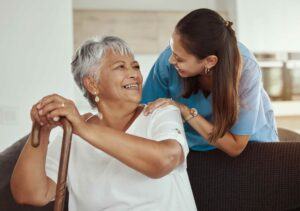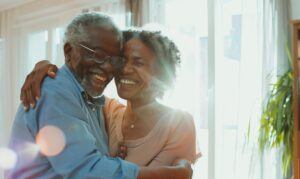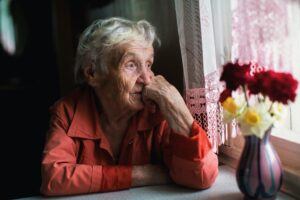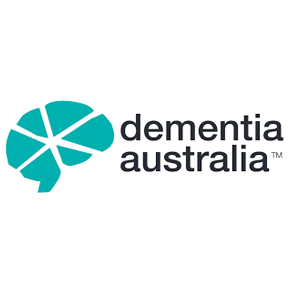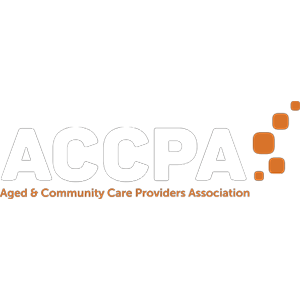Research continues to show that walking after a stroke is one of the most important things you can do to promote recovery. Clinical studies prove that walking helps a stroke victim regain strength, stamina and balance.
The Stroke Foundation emphasises that walking is one of the most important parts of a stroke rehabilitation program. The brain needs stimulation to relearn motions that have been lost. Walking – even slow walking, supported by a nurse at home – is a movement that triggers this stimulus and increases the flow of oxygen to the brain.
Over time, walking improves muscle strength that may have atrophied due to a stroke. It will also improve:
- Balance
- Stamina
- Overall resilience
- Emotional and mental outlook
- The ability to mitigate depression and other psychological side effects
The Stroke Foundation suggests that staying active with at least 30 minutes of moderate intensity physical activity on most (preferably all) days of the week is the best way to control your risk of a stroke.
Walking should be a key component of almost all stroke-rehabilitation programs. Whether walking with a cane or the help of an in home care assistant, stroke survivors should make an effort to put one foot in front of the other.
Start Walking Slowly to Promote Stroke Recovery
Depending on the severity of the stroke, survivors may have atrophied muscles, reduced stamina, and other physical limitations that may make it difficult to take even a few first steps.
The good news is that 65-85% of stroke victims do learn to walk independently again after 6 months. So, don’t despair and start slowly to build endurance.
With fortitude and the right attitude, a gradual walking program can be implemented. Keep the following in mind:
- Walking every day, even for a short period of time makes a difference.
- Start with 10 minutes a day, which can be broken into two 5-minute segments.
- Progress at a slow and steady pace. Don’t push or rush it.
- As endurance and mobility improve, increase the number of minutes walked every day.
- Keep a journal noting how many minutes you walk on a daily basis. Your in home care support can help with this also. To keep it interesting, also take notes about where you walked and what you saw.
- Level terrain is recommended to start. Walking in a backyard or around the block works well.
- You shouldn’t try walking alone in the beginning. Start by walking with a family member or in home health care worker who can provide assistance as needed.
- There are also many support groups for stroke survivors who may be alone, ageing in place or without resources for private care.
Most stroke patients receive some post-stroke physiotherapy and clinical rehabilitation which involves walking. What’s important is to continue exercising beyond this medically supervised rehab. Moderate appropriate exercises that can be incorporated into the walking and recovery program, will result in even more benefit. Any home care agency should include exercise support as part of their in home care services.
Don’t be discouraged. Small gains over months may turn into major gains over the years.
5 Stroke Recovery Exercises
The Australian Stroke Foundation strongly advocates that exercise is one of the most effective ways to recover from some of the debilitating symptoms of a stroke. Walking is great, but so are other forms of exercise that also build stamina, energy and muscle strength. Try one of these exercises for stroke patients:
- Pedalling on a stationary bicycle. Now there are even portable pedal exercise cycles that can be placed on the floor in front of a chair. No mounting a bicycle required.
- Resistance training. Lifting small weights (1–2kg) and doing stationary exercises – seated or standing – is excellent resistance training. It doesn’t have to be strenuous to be effective. Weights can also be strapped to ankles and wrists if need be.
- Simple balance exercises. Stand on both feet and raise one or two arms to shoulder height or above the head. Initially use a chair or wall to balance with one arm.
- Stretching exercises. Even easy stretches are beneficial and with time may evolve into “chair yoga” which is offered at many senior centres.
- Water aerobics. A wonderful weightless way to stretch and get a mild cardio workout.
The key is consistency. Stroke recovery requires a steady, repetitive program of walking and exercise to be successful. It should also be as much fun as possible. Take the dog for a walk, stroll through a lovely park or plug in those headphones and listen to your favourite music while you’re on that stationary bike. Your in home care agency can accompany you and help with motivation.
The Stroke Foundation says that regular physical activity following a stroke can also help reduce the risk of falls and other complications like osteoporosis and heart disease. Exercise has also proven to improve cholesterol levels, manage diabetes, combat obesity and control blood pressure.
So, find some fun, comfortable walking shoes and go for a stroll. It’s good for all of us.
References
The Stroke Foundation Stay Active
Good News for Stroke Survivors
As a leading age care provider, Home Care Assistance offers tailored in-home care services for older Australians, enabling them to live happier and healthier lives in the comfort of their own homes.
We offer private and government subsidised Care Packages and have office locations that are a registered NDIS provider. Our Care Workers undergo extensive training in order to deliver unmatched in-home aged care services where people can continue ageing in place. We are proud ambassadors of the My Aged Care government funded aged care program, enabling Australians to successfully navigate the process and gain approval for in-home care support packages. Home Care Assistance offers hourly care, specialised care, Alzheimer’s and Dementia care, hospital to home care, and 24 hour in home care.




